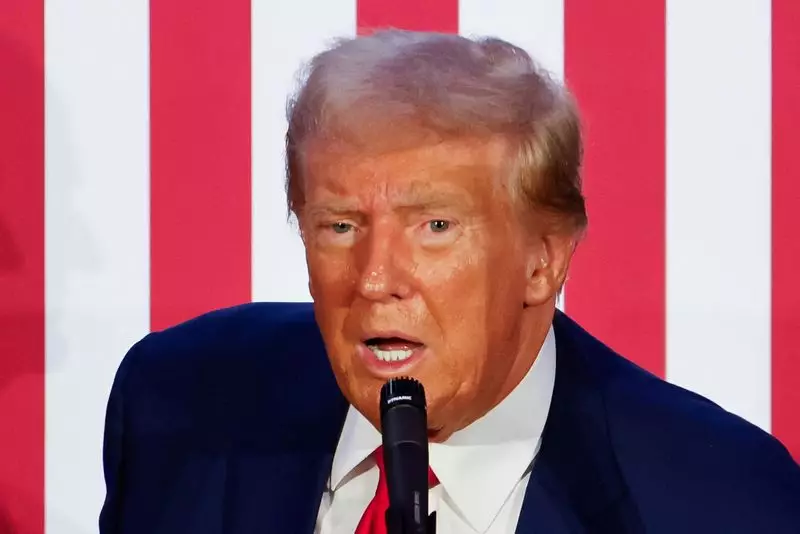In the wake of the approaching presidential elections, tariffs have resurfaced as a central theme in economic discussions, particularly those put forth by former President Donald Trump. His aggressive tariff agenda has raised considerable eyebrows among financial analysts and market experts alike. Trump’s intention to impose hefty tariffs—ranging from 10% to 20% on all foreign goods and up to 60% on items imported from China—suggests a strategy aimed at bolstering U.S. manufacturing and protecting jobs. However, the potential impact of these tariffs on the economy, especially on the S&P 500 companies, cannot be overlooked.
Recent analyses from Barclays offer a gloomy forecast regarding Trump’s tariff plans, predicting a significant drag on the earnings of S&P 500 listed companies, estimating a reduction by approximately 3.2% next year. This prediction does not merely address the direct financial repercussions. Instead, it delves deeper into the potential secondary effects driven by higher consumer prices and an overall slowdown in economic growth. The combination of these factors could create an unfavorable environment for corporations that heavily rely on intricate global supply chains, prompting analysts to spotlight sectors such as materials, discretionary spending, industrials, technology, and healthcare as being particularly vulnerable.
The rationale behind these tariffs is rooted in the belief that they will serve as a safeguard for American jobs and industry. Trump argues that they are necessary to rectify perceived wrongs in international trade practices, particularly against nations where the U.S. runs substantial trade deficits. While the goal is commendable, the execution could lead to unintended consequences, such as retaliatory measures from affected countries, adding an additional 1.5% hit on corporate earnings.
Beyond immediate corporate earnings, the impact of increased tariffs is likely to ripple through the broader economy by creating supply constraints that could precipitate inflationary pressures. This scenario presents a challenge for the Federal Reserve, which is currently balancing high-interest rates while monitoring economic activity. Barclays’ analysis indicates that an uptick in inflation may compel the Fed to maintain higher borrowing costs in the short term, despite expectations to lower rates in the face of weakening economic conditions.
The interplay between tariffs and inflation thus posits a complex dilemma for policymakers. Analysis suggests that if the economy begins to weaken substantially due to diminished growth prospects and heightened trade uncertainties, the Fed may pivot toward a more aggressive interest rate cut strategy, potentially reducing rates by as much as 100 basis points. This shift underscores the interconnectedness of fiscal policy, trade relations, and market performance.
Adding another layer of complexity to the unfolding situation is the political climate surrounding the upcoming election. National polls indicate a tight race between Trump and his competitor, Democrat Kamala Harris. Regardless of who emerges victorious, the analysts believe that a divided Congress is likely to persist, which could complicate the implementation of comprehensive trade policies that require legislative backing.
Given this landscape, either candidate may need to resort to executive actions to realize their trade agendas. The authority to set tariffs resides largely with the president, granting them significant leeway to implement changes without the consensus of Congress. This dynamic not only highlights the potential volatility in trade policy but also suggests a possible shift toward more unilateral trade practices, further exacerbating tensions between the U.S. and its trading partners.
As Trump’s tariff proposals loom large on the economic horizon, the implications for U.S. corporations and the overall economy are profound. While the intent is to protect domestic interests, the potential for retaliatory actions and inflationary pressures poses significant risks. For future administrations, balancing these competing interests will be paramount. Achieving sustainable economic growth while navigating the complexities of global trade will require foresight, adaptability, and a nuanced understanding of the transformative nature of tariffs in an interconnected global economy.
As we approach election day, the decisions made regarding trade policy will resonate deep into the fabric of American industry and economic health—a challenge that is not easily surmounted.

